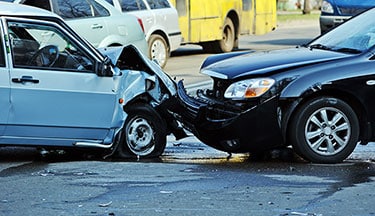In recent years, the United States has witnessed a concerning surge in car accident deaths, prompting a closer examination of the factors contributing to this disturbing trend. Despite advancements in vehicle safety technology and increased awareness about road safety, the numbers paint a grim picture. This article delves into the root causes of the rising car accident fatalities in the US and explores potential solutions to curb this alarming trend.
I. The Sobering Statistics:
The National Highway Traffic Safety Administration (NHTSA) reported a notable increase in car accident deaths in the US over the past decade. While the nation saw a decline in fatalities during the early 2000s, the trend has reversed, with a sharp rise recorded in recent years. In 2020 alone, there were over 38,800 deaths resulting from motor vehicle crashes, marking a concerning uptick from previous years.
II. Contributing Factors:
Several factors contribute to the rising number of car accident deaths in the US, creating a complex web of challenges for policymakers, law enforcement, and the general public. Some key factors include:
- Distracted Driving: The ubiquitous use of smartphones has led to a significant increase in distracted driving incidents. From texting to scrolling through social media, drivers are more preoccupied than ever, diverting their attention from the road and increasing the likelihood of accidents.
- Speeding: Excessive speed remains a leading cause of fatal accidents. Despite speed limits and enforcement measures, many drivers continue to exceed safe speeds, reducing their reaction time and amplifying the severity of collisions.
- Impaired Driving: Driving under the influence of alcohol or drugs continues to be a persistent issue. Despite public awareness campaigns and stringent penalties, impaired driving remains a significant contributor to fatal accidents.
- Infrastructure Challenges: Aging and inadequate infrastructure can contribute to accidents. Poorly designed roads, lack of proper signage, and insufficient traffic management can create hazardous conditions for drivers.
- Inadequate Seatbelt Usage: Despite the proven effectiveness of seatbelts in preventing fatalities, some drivers and passengers still neglect to use them. This simple safety measure could significantly reduce the severity of injuries in the event of a crash.
III. Technology and Distraction:
While technology has undoubtedly improved various aspects of our lives, it has also introduced new challenges on the road. The integration of advanced infotainment systems, navigation tools, and in-car connectivity features can be a double-edged sword. While these technologies aim to enhance the driving experience, they can also contribute to distracted driving if not used responsibly.
The automobile industry is not solely responsible; individual drivers play a crucial role in fostering a safer driving culture. Striking a balance between leveraging technology for convenience and maintaining a focus on the road is paramount for reducing accidents related to distraction.
IV. Addressing Impaired Driving:
Efforts to combat impaired driving must be multi-faceted. Law enforcement agencies need continued support and resources to enhance sobriety checkpoints and enforce strict penalties for driving under the influence. Public awareness campaigns should emphasize the potential consequences of impaired driving, encouraging individuals to plan alternative transportation when impaired.
Moreover, advancements in technology, such as ignition interlock devices, can play a pivotal role in preventing individuals with a history of impaired driving from operating a vehicle. These devices require drivers to pass a breathalyzer test before starting the car, acting as a deterrent and a safety measure.
V. Improving Road Infrastructure:
Investing in road infrastructure is crucial for enhancing safety. Local and federal governments should prioritize the maintenance and improvement of roads, ensuring they meet modern safety standards. This includes addressing issues like poor road design, inadequate lighting, and the implementation of smart traffic management systems to reduce the risk of accidents.
VI. Advocating for Responsible Driving:
Promoting a culture of responsible driving requires a collective effort from government agencies, non-profit organizations, and the private sector. Educational programs should target drivers of all ages, emphasizing the importance of safe driving practices, adhering to speed limits, and eliminating distractions.
Conclusion:
The alarming rise in US car accident deaths demands immediate attention and concerted efforts from all stakeholders. By addressing the root causes, implementing stricter enforcement measures, leveraging technology responsibly, and improving road infrastructure, we can work towards creating a safer environment for all road users. Ultimately, the goal should be to reverse the current trend and make America’s roads safer for everyone.
-
What is the current trend in car accident deaths in the United States?
- As of the latest available data, car accident deaths in the United States have been on the rise in recent years, marking a concerning reversal of the previous decline seen in the early 2000s.
-
What are the primary causes of the increase in car accident fatalities?
- Several factors contribute to the surge in car accident deaths, including distracted driving, speeding, impaired driving, inadequate road infrastructure, and a lack of seatbelt usage.
-
How many car accident deaths were recorded in the most recent year?
- In 2020, there were over 38,800 car accident deaths reported in the United States, according to the National Highway Traffic Safety Administration (NHTSA).
-
What role does distracted driving play in the increase in car accidents?
- Distracted driving, often associated with smartphone use, is a significant factor contributing to accidents. Texting, browsing social media, and other distractions divert drivers’ attention from the road, increasing the risk of collisions.
-
Is technology, such as in-car infotainment systems, contributing to distracted driving?
- Yes, technology in vehicles, including infotainment systems, navigation tools, and connectivity features, can contribute to distracted driving if not used responsibly. Striking a balance between technology use and maintaining focus on the road is crucial.
-
How does speeding contribute to fatal accidents?
- Excessive speed reduces a driver’s reaction time and increases the severity of accidents. Despite speed limits and enforcement measures, some drivers continue to exceed safe speeds, leading to a higher likelihood of fatal collisions.
-
What efforts are being made to combat impaired driving in the US?
- Efforts to combat impaired driving include strict law enforcement measures, sobriety checkpoints, public awareness campaigns, and the implementation of ignition interlock devices for individuals with a history of impaired driving.
-
How can road infrastructure impact car accident rates?
- Inadequate road infrastructure, including poor road design, lack of proper signage, and insufficient traffic management, can contribute to accidents. Investing in the maintenance and improvement of roads is crucial for enhancing overall road safety.
-
Are seatbelt usage rates a concern in the rise of car accident deaths?
- Yes, despite the proven effectiveness of seatbelts in preventing fatalities, some drivers and passengers neglect to use them. Encouraging and enforcing seatbelt usage is an essential aspect of reducing the severity of injuries in accidents.
-
What can individuals do to contribute to safer roads and reduce car accident deaths?
- Individuals can contribute by practicing responsible driving habits, avoiding distractions, adhering to speed limits, using seatbelts, and planning alternative transportation when impaired. Additionally, staying informed about road safety and supporting initiatives for safer driving culture are essential.

